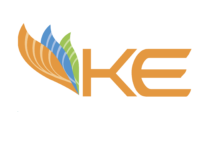The country’s Consumer Price Index (CPI) inflation increased by 4.8 per cent year-on-year (YoY) basis in April 2017, as compared to 4.9 per cent in the previous month or 4.2 per cent in April, 2016.
On a month-on-month basis, it increased by 1.4 per cent in April, 2017 as compared to an increase of 0.8 per cent in the previous month and an increase of 1.5 per cent in April, 2016, states the data revealed by Pakistan Bureau of Statistic (PBS) here on Tuesday.
“Oil prices have recently trended downwards, currently standing at $49.6 per barrel vs. $50.3 per barrel at the end of March, 2017,” said the analyst at Taurus securities. The CPI inflation is directly linked with the petroleum prices and food inflation, which increased in the month of April, 2017 he added. The federal government, however, maintained the petroleum prices till 15th of May, 2017. Therefore, it is being hoped that the CPI inflation will be stable during May this year.
The analyst forecasts CPI at 4.3 per cent YoY as against 2.86 per cent YoY in the current fiscal year. The main factors that would drive inflation in view for the next two months are i) Ramadan’s impact on food prices ii) Strong domestic cotton prices (Avg. Rs 6,867/maund in April, 2017 vs. Avg. Rs 5,700/maund in June, 2016) keeping the clothing index elevated in the coming months, and iii) the impact of increments in custom/regulatory duties on consumer products in the budget.
He further said that the current trends suggest that the actual inflation would be lower than the actual target of 6 per cent in 2016-17.
“This time, the ministry of finance did not increase the petroleum prices for next 15 days and the government’s decision would support the core inflation in the coming months,” another analyst said. “We are looking inflation at above 4.5 per cent in May and June, 2017 only because of higher petroleum prices in the international market.
Core inflation, measured by non-food non-energy CPI (Core NFNE) increased by 5.5 per cent on (YoY) basis in April, 2017 as compared to an increase of 5.3 per cent in the previous month and 4.4 per cent in April, 2016. On a MoM basis, it increased by 1.3 per cent in April, 2017 as compared to an increase of 0.1 per cent in the previous month, and an increase of 1.1 per cent in the corresponding month of last year i.e. April, 2016.
Core inflation, measured by 20 per cent weighted trimmed mean CPI (Core Trimmed) increased by 4.8 per cent on (YoY) basis in April, 2017 as compared to 4.5 per cent in the previous month and by 3.8 per cent in April, 2016. On MoM basis, it increased by 0.8 per cent in April, 2017 as compared to an increase of 0.2 per cent in the previous month and an increase of 0.6 per cent in the corresponding month of last year i.e. April, 2016.
SPI inflation YoY increased by 2.3 per cent in April, 2017 as compared to an increase of 3.1 per cent a month earlier, and an increase of 2.9 per cent in April 2016. On MoM basis, it decreased by 0.9 per cent in April, 2017 as compared to an increase of 1.8 per cent a month earlier and a decrease of 0.1 per cent in April, 2016.
Wholesale Price Index (WPI) inflation on a YoY basis increased by 6.0 per cent in April, 2017 as compared to an increase of 6.4 per cent a month earlier and an increase of 0.6 per cent in April, 2016. WPI inflation on a MoM basis increased by 0.9 per cent in April, 2017 as compared to an increase of 0.7 per cent a month earlier and an increase of 1.3 per cent in the corresponding month of last year, April 2016.
The minutes of March, 2017 MPC meeting indicates that the SBP is not overly concerned on the domestic inflation front, where it projected 2017-17 inflation at 3.8 per cent (at an oil price of $55/bbl in the remaining period of FY17) but rather focuses on reducing the output gap.
LSM growth has been ascending upwards on a sequential basis since September, 2016. However, 8 month 2016-17 LSM growth stands at 4.12 per cent; almost flat compared to 4.33 per cent in CPLY, which also suggests the likelihood of the government missing the GDP target of 5.5 per cent for 2016-17.
The analyst believes that focus on growth will affect interest rates trajectory going forward. Based on 12 months forecast for average inflation, the analyst said that the interest rate may hike 50 basis points in late calendar year 2017.
Food items:-
Increased: Fresh Vegetables (20.64%), Fresh Fruits (8.74%), Chicken (3.34%), Potatoes (2.81%), and Rice (2.55%).
Decreased: Tomatoes (5.57%), Onion (2.77%), Wheat (2.65%), Pulse Gram (2.05%), and Pulse Masoor (1.49%).
Non-food items:-
Increased: Education (6.5%), Personal Equipment (2.08%), Water Supply (2.08%), and House rent (1.52%).

























